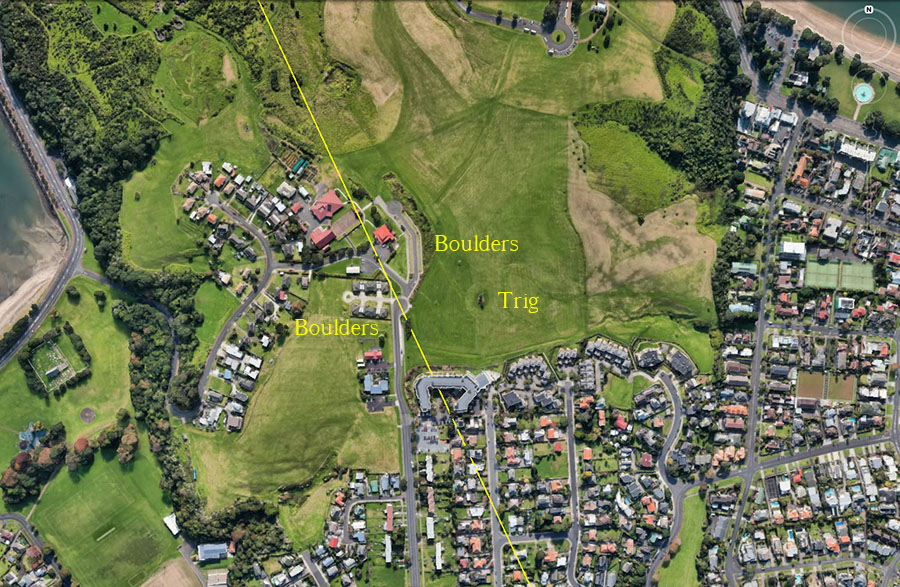

The line makes landfall on the southern side of the harbour and crosses Bastion Point, skirting by the modern trig tower situated 320-feet over to the ENE. Likewise, there are several groupings of large basalt boulders near the line, pressed into service for a garden rockery. The evidence would seem to suggest that an ancient boulder cairn marker has been pillaged in modern times for this purpose.
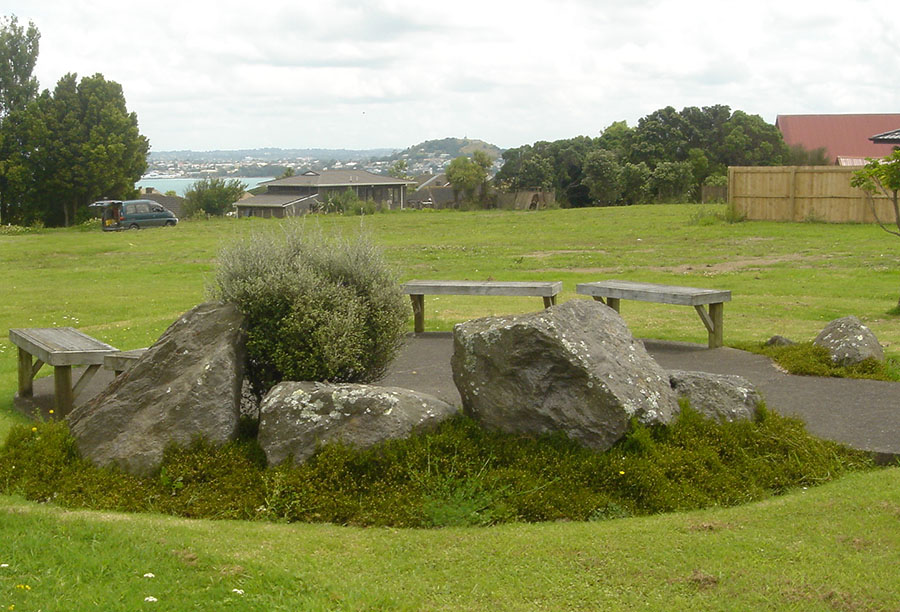
A grouping of large boulders has been appropriated to build this rockery, which sits 220-feet west of the alignment line. In the background is another volcanic cone across the harbour called Mt Victoria.
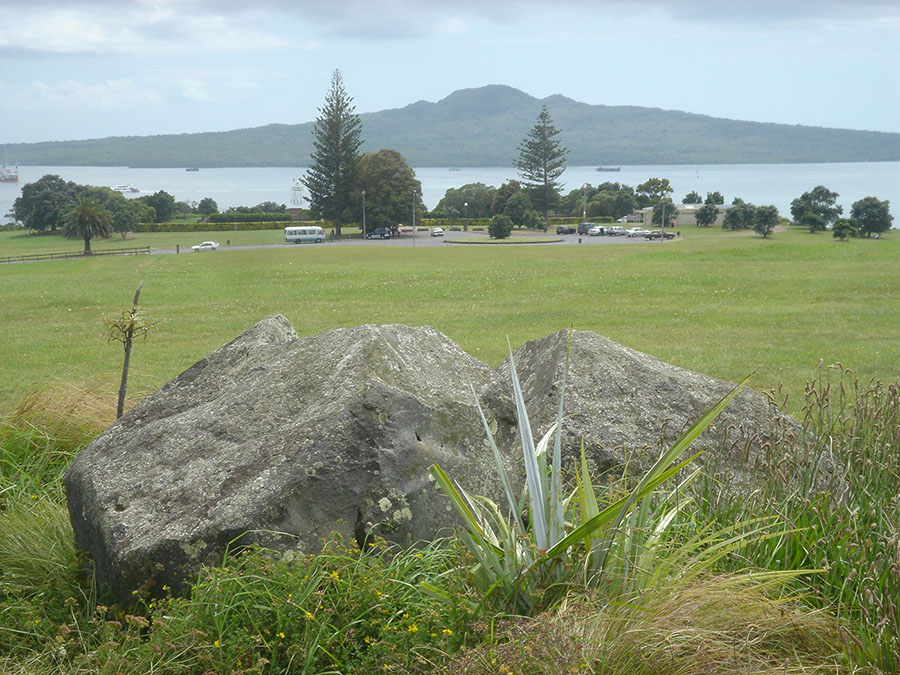
This grouping of very large boulders sits 300-feet ENE of the line. It seems very unlikely that such large boulders were laboriously transported to this spot for a somewhat out of place rockery. Rangitoto Island looms up behind in grand majesty. From this boulder cairn the summer solstice sun sets in the volcano crater of Mt Eden, 3.8-miles distant.
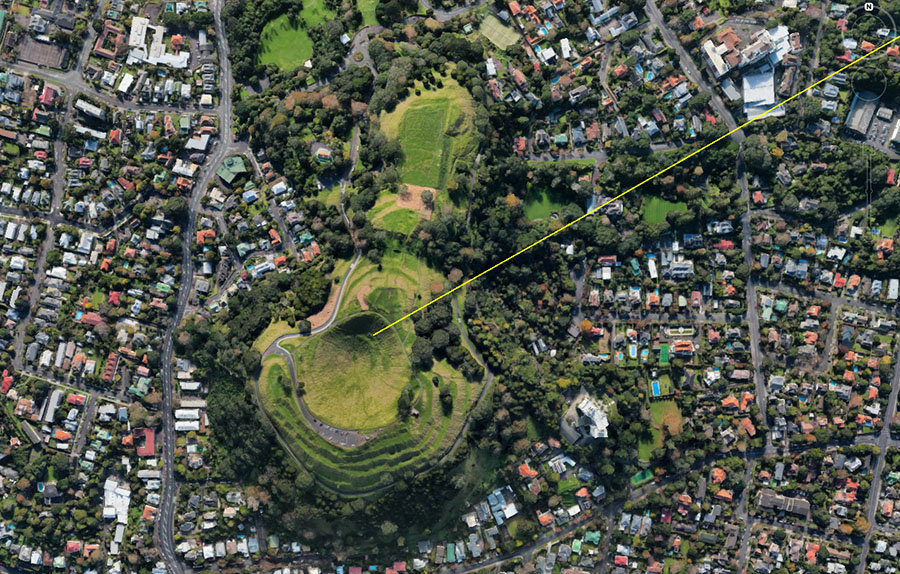
Mt Eden or Maungawhau is an extinct volcano in the heart of Auckland City and was laboriously terraced in ancient times. On the day of the summer solstice the setting sun alights upon the northern side of the volcano crest and sinks into its crater, returning fire to the, once, fiery pit.
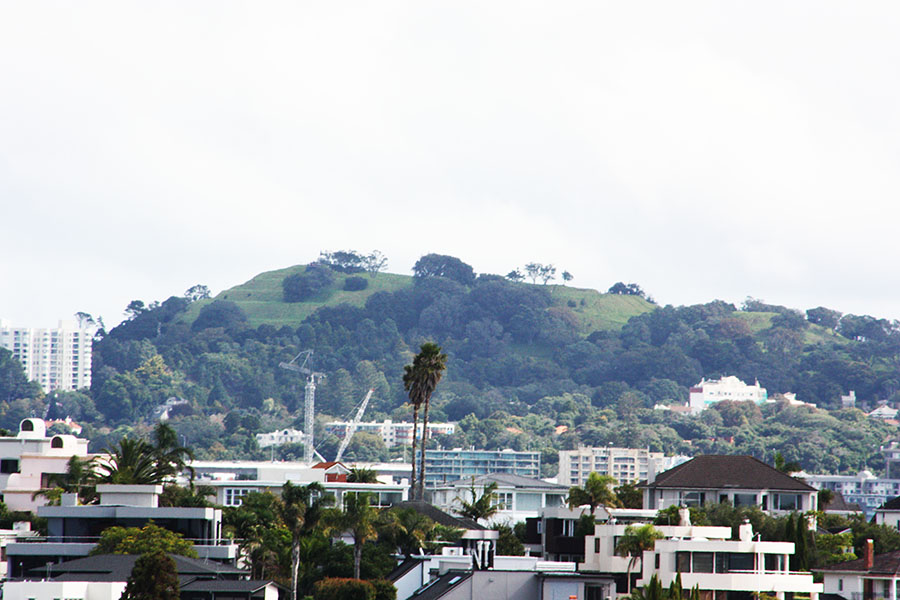
A magnified view of Mt. Eden, the summer solstice sunset outer marker, from the Bastion Point trig and solar observatory position. The carved terraces were made by the former, long-term inhabitants and similarly huge, ancient excavations are typically found all over the 36+ volcanic cones of the Auckland Isthmus. Massive earthworks were undertaken by those very industrious people at locations all across New Zealand.
Here are some quotes from old New Zealand books or manuscripts about Mt. Eden.
Felton Mathew, Surveyor General in Lieutenant-Governor Hobson's fledgling government, observed during his first visit to Thames-Waitemata (Auckland) on February 23rd 1840:
'There are several very singular hills rising boldly from the surrounding land, in shape and form closely resembling the Roman encampments on the Tumuli that abound in many parts of England & having like them three or four distinct fops or ditches encircling them towards the summit - This singular too that these have been formed for defense by the natives - the top of every hill is marked in this way with distinct lines of circumvallation. An antiquary might from this circumstance deduce a connection between the New Zealanders and the ancient Romans!!' (See Felton Mathew's unpublished letters to his wife, Special Collections, Auckland Public Library.
Another early explorer noted:
'Arriving at the foot of the mountain [Mt. Eden] we assayed its ascent in the course of which my friend evinced a deep interest in traces of Maori fortifications of a past age, which were everywhere in evidence, the escarpments, trenches and what had once been covered ways and store pits though fallen in or overgrown, were yet in a wonderful state of recognition.
Several of the stone walls of these fortifications could still be traced with considerable accuracy, although the oldest living Maori could not tell when, or by whom, they were erected. It must have taken a much larger population than was then to be found to man these fortifications effectively, so extensive were they, the whole mountain appearing to be girt by them, line after line, from bottom to top (see Sketches of Early Colonisation in New Zealand -and its Phases of Contact With the Maori Race, (circa late 1840's), by "Te Manuwiri", pg. 123, Whitcomb & Tombs).
Another publication states:
"Maungawhau, 'the mountain of the whau', a shrub believed to have been growing in the area. The shrub was valued for its cork-like wood, used for floats on fishing nets...Maori legend tells of Maungawhau's [Mt. Eden's] first inhabitants, the Patupaiarehe or Turehu, who were skilled in the arts of fishing, hunting, weaving and warfare. It is said that this nocturnal people were destroyed as they lingered building a bridge after dawn"(see The Changing Face Of Mt. Eden, pg. 8, Mt. Eden Borough Council, 1989).
So, what was the general fate of these remnant Patu-paiarehe or Turehu, some of whom were of mixed-Maori blood (captured slave women) by the time Ngapuhi chief Hongi Hika unleashed the"Musket Wars" on other Maori tribes around 1818 and thereafter?
'A Maori relating an account of an expedition said, incidentally: 'On the way I was speaking to a red-haired girl who had just been caught out in the open. We were then on the eastern side of Maunga Whau, Auckland. My companions remained with the girl whilst I went to see the man of Waikato who had been killed. As we came back, I saw the head of the red-haired girl lying in the ferns by the side of the track. Further on, we overtook one of the Waihou men carrying a back-load of the flesh, which he was taking to our camp to cook for food. The arms of the girl were round his neck, whilst the body was on his back.' If one can mentally picture the scene, with the man striding along, carrying the headless, disemboweled trunk of the naked girl, enough of this kind of horror will have been evoked...' (see Edward Tregear, The Maori Race, New Zealand, 1904).
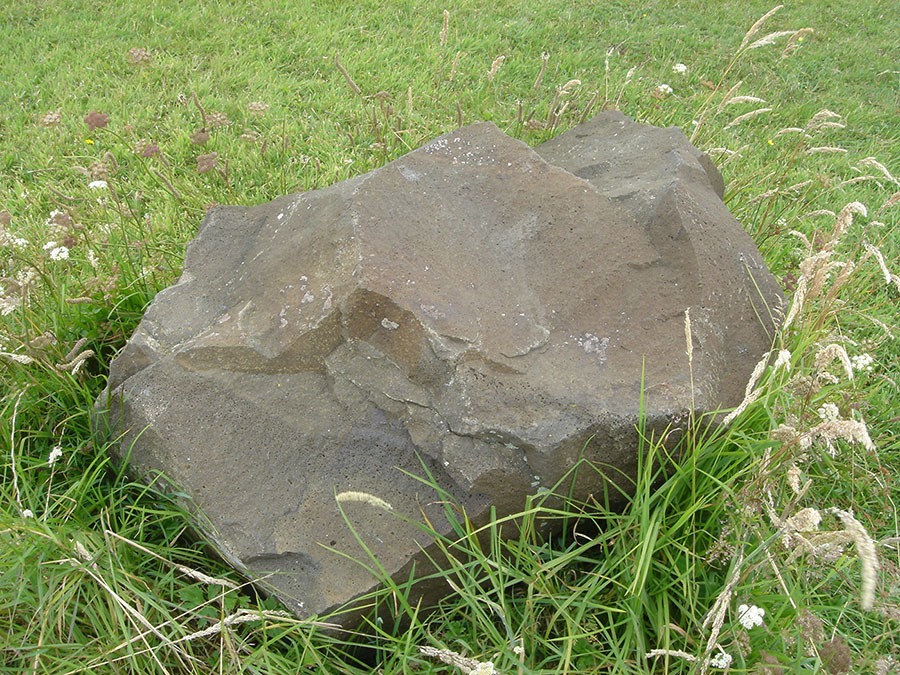
This smaller boulder at Bastion Point, Orakei, is said to mark the spot where a child died tragically in a tent fire in 1977.